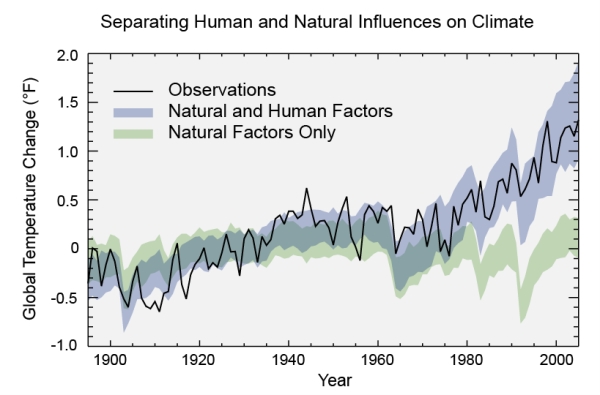
Recent report shows city carbon emissions are down 11 percent from 2005 to 2015 while jobs expand
CHICAGO—(ENEWSPF)—September 18, 2017. Mayor Rahm Emanuel today announced that Chicago reduced its carbon emissions by 11 percent from 2005 to 2015, bringing the city to 40 percent of the way to meeting its Paris Climate Agreement goals. The Mayor’s June 7 Executive Order established the goal of reducing citywide greenhouse gas emissions to levels equivalent to or greater 26-28 percent reduction from 2005 levels to 2025, the original commitment made by the Obama Administration as part of the United States’ commitment to the Paris Accord. The reduction in greenhouse gases over the past decade came while the number of jobs within the city increased by 7 percent and is equivalent to shutting down a coal power plant for 14 months.
“While the current administration buries its head in the sand on climate change, it is now up to Chicago and other cities to develop a sustainable 21st century economy,” said Mayor Emanuel. “This report confirms that protecting the environment and growing jobs go hand in hand. This city, alongside numerous other cities across the country, is proud of its commitments to bringing down carbon emissions levels.”
This final emissions inventory report analysis, developed by AECOM, found that Chicago generated 32.7 million metric tons of carbon dioxide equivalent in 2015, compared to 36.9 million in 2005. The analysis focused on carbon emissions in major sectors, including stationary energy, transportation and waste, with significant reductions driven by a mix of reduced electricity consumption and the use of cleaner forms of energy. The report follows-up on the preliminary analysis from this January, which showed a 7 percent reduction in Chicago’s carbon emissions from 2010 to 2015. The preliminary and final reports can be found at www.CityofChicago.org/Emissions.
“The emission reductions work being done in cities is critical to meeting ‘America’s Pledge’ — our commitment to fulfilling the Paris Agreement,” said Mike Bloomberg, UN Special Envoy for Cities and Climate Change. “Chicago is helping to lead the way, and I applaud Mayor Emanuel for the city’s progress.”
This announcement builds on Mayor Emanuel environmental commitments through Retrofit Chicago, which comprises efficiencies made to buildings, streetlights and benchmarking goals. Through the Retrofit Chicago Energy Challenge, 76 member buildings covering 51.3 million square feet have committed to reducing their energy use by 20 percent. Additionally, the City’s Energy Benchmarking Ordinance, which was implemented in 2012, has reduced energy use by four percent in buildings covered by the ordinance. Retrofit Chicago is a finalist for the C40 Cities Bloomberg Philanthropies Awards, which will take place in December.
Earlier this year, Chicago was awarded the U.S. Environmental Protection Agency 2017 ENERGY STAR Partner of the Year Award. The award is given annually to honor organizations that made outstanding contributions to protecting the environment through energy efficiency.
The Mayor announced in April that by 2025 all of Chicago’s public buildings will be powered by 100 percent renewable energy. That transition means that eight percent of the city-wide electricity load or 1.8 billion kilowatt hours will come from clean and renewable sources. This follows the 2013 commitment that the City made to eliminating coal from its electricity supply. In March, Mayor Emanuel, the Chicago Department of Transportation and the Chicago Infrastructure Trust announced the Chicago Smart Lighting Project which will replace 85 percent of Chicago’s light fixtures and add a management system that will give the city a state-of-the-art smart lighting grid. These new lights, which will be owned and operated by the City, will consume 50-75 percent less electricity than existing high pressure sodium lights, generating significant electricity cost savings that will be utilized to pay for the modernization.
Since the Trump administration’s announcement to pull out of the Paris Agreements, cities across the country and the world have committed to creating a sustainable future for their residents. Mayor Emanuel joined over 300 Mayors from around the country to commit to the Paris Agreement as part of the Mayors National Climate Agenda, or Climate Mayors. This network of U.S. mayors — representing over 56 million Americans in red states and blue states — work together to strengthen local efforts for reducing greenhouse gas emissions and supporting efforts for binding federal and global-level policy making. Mayor Emanuel also joined over 1,000 state, local, and business leaders from across the country as part of the “We’re Still In” campaign, coming together to signal the importance of the Paris Accord both nationally and across the world.
Mayor Emanuel has worked with cities around the country to post research from the U.S. Environmental Protection Agency’s Climate Change Website after the Trump administration unceremoniously removed it from the federal government’s websites on April 29. The research can be found on the City of Chicago’s “Climate Change is Real website, www.cityofchicago.org/climatechangeisreal.
Source: www.cityofchicago.org








